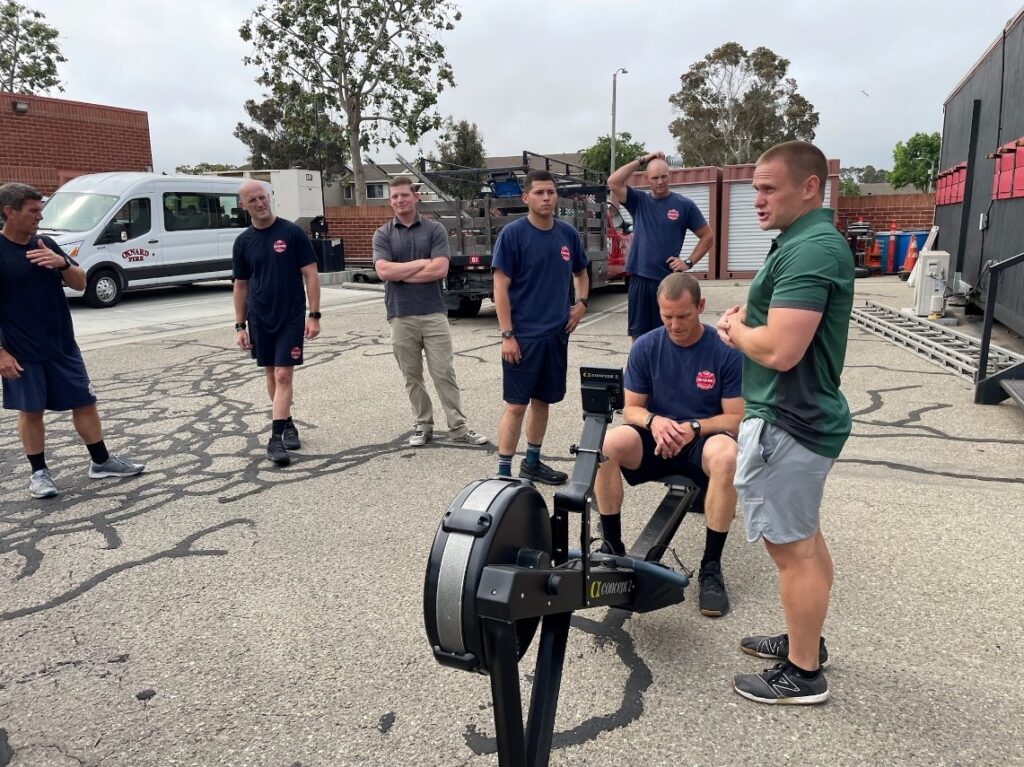For firefighters, physical fitness is not just a matter of health—it is a critical component of their ability to perform life-saving tasks effectively. One key measure of physical fitness is VO2 Max, the maximum rate at which an individual can consume oxygen during intense exercise. This metric is crucial for firefighters due to the physically demanding nature of their work. In this blog, we will explore the importance of VO2 Max, its impact on job task performance, its role in lowering the risk of heart disease and other health problems, and how a higher VO2 Max aids in cooling the core temperature when wearing turnout gear.
VO2 Max and Job Task Performance
Firefighting is a profession that requires peak physical performance. Firefighters are often called upon to carry heavy equipment, climb stairs, and perform rescues under extreme conditions. A higher VO2 Max translates to greater aerobic capacity, which directly enhances a firefighter’s ability to perform these physically demanding tasks efficiently and safely.
A study by Sothmann et al. (1990) found that firefighters with higher VO2 Max levels were able to perform simulated firefighting tasks more effectively than those with lower levels. The ability to sustain physical effort without undue fatigue is critical in emergency situations where every second counts.
Lowering Heart Disease and Other Health Problems

Cardiovascular health is a significant concern for firefighters, who are at an increased risk for heart disease due to the intense physical and psychological stress they encounter. Improving VO2 Max through regular cardiovascular exercise can help lower this risk.
Research by Kales et al. (2007) indicates that sudden cardiac events are a leading cause of line-of-duty deaths among firefighters. Regular aerobic training, which improves VO2 Max, can enhance heart function, reduce blood pressure, and lower cholesterol levels, thereby reducing the risk of heart disease. Additionally, a higher VO2 Max is associated with better overall health, including lower risks of conditions such as diabetes and obesity.
Cooling the Core Temperature
One of the unique challenges firefighters face is managing their core body temperature while wearing turnout gear. This gear, while essential for protection, can cause significant heat stress. A higher VO2 Max helps the body become more efficient at regulating temperature.
A study conducted by Smith et al. (1997) demonstrated that firefighters with higher aerobic fitness levels were better able to dissipate heat and maintain lower core temperatures during firefighting activities. This is crucial as overheating can lead to heat exhaustion or heat stroke, both of which can be life-threatening in the field.
Conclusion

For firefighters, maintaining a high VO2 Max is not merely about fitness; it is about survival and effectiveness. Enhanced job task performance, reduced risk of heart disease and other health issues, and better core temperature regulation are all critical benefits that come with a higher VO2 Max. Fire departments should prioritize aerobic fitness training as part of their health and safety protocols to ensure that their personnel are physically prepared for the demanding nature of their work.
About the Author

Justin Reading brings over 15 years of expertise to the fitness industry, specializing in working with first responders. He is dedicated to reducing pain and improving quality of life for his clients, working with local fire departments to optimize human performance and identify solutions to exceed the demands of the job. Over the past six years, Justin has focused on research and developing specialized programs to enhance first responder’s capabilities. Previously, as Lead Trainer and Manager at Sports Academy Thousand Oaks, he worked with professional athletes from the NFL, NCAA, NBA, and MLB, helping them achieve peak performance levels.
References:
1. Sothmann, M. S., Saupe, K., Jasenof, D., Blaney, J., Fuhrman, S., Woulfe, T., … & Pawelczyk, J. (1990). Advancing age and the cardiorespiratory stress of firefighting in veteran firefighters. *American Journal of Industrial Medicine, 17*(3), 343-358.
2. Kales, S. N., Soteriades, E. S., Christophi, C. A., & Christiani, D. C. (2007). Emergency duties and deaths from heart disease among firefighters in the United States. *New England Journal of Medicine, 356*(12), 1207-1215.
3. Smith, D. L., Petruzzello, S. J., Kramer, J. M., & Misner, J. E. (1997). The effects of different thermal environments on the physiological and psychological responses of firefighters to a training drill. *Ergonomics, 40*(4), 500-510.